Sustainable cities and communities are becoming essential for the future of human development as urban populations continue to grow rapidly. Cities must embrace urban sustainability practices that balance economic progress, environmental protection, and social well-being. Through smarter sustainable city planning, urban spaces can reduce pollution, lower energy consumption, and improve public health. The use of green infrastructure for cities, such as renewable energy systems, green roofs, efficient public transport, and climate-resilient water management, plays a major role in reducing the environmental footprint of urban areas. Governments and planners worldwide are now focused on building sustainable communities that offer equal access to housing, education, and employment while maintaining ecological balance. The future of sustainable urban development lies in innovative technologies, smart governance, and community participation to create cleaner, safer, and more resilient cities for generations to come.
Sustainable cities and communities are gaining popularity due to rapid urbanization, population growth, and pollution. They aim to achieve environmental, social, and economic sustainability for current populations without compromising the ability of future generations to do the same. According to the 2018 Revision of World Urbanization Prospects, 68% of the global population is projected to live in urban areas by 2050, with this figure expected to rise. In this blog, we will explore the concept of sustainable cities and society, examine a sustainable city model, and discuss their features, as well as the reasons for their growing prominence.
Table of contents
- What are Sustainable Cities and Communities ?
- Importance of Sustainable City model
- Urban sustainability practices – Benefits
- Features of Sustainable Cities
- Economic Benefits of sustainable city model
- Challenges and Solutions of Sustainable Cities
- The Future Outlook for Sustainable Cities and Communities
- Call to Action for Creating a Sustainable Future
- Conclusion
What are Sustainable Cities and Communities ?
Sustainable cities and communities are those that are dedicated to achieving environmental, social, and economic sustainability for existing populations. However, the concept doesn’t jeopardize the ability of future generations to experience the same. We will go through the definition of each of the terms.
- Sustainable Cities
- Sustainable communities
Sustainable city – Definition and Key features
A sustainable city balances environmental, social, and economic needs. This aims to provide residents with a high quality of life while safeguarding resources for future generations.
Key features of sustainable cities include efficient public transport, renewable energy sources, ample green spaces, and robust waste reduction programs. Generally, these cities prioritize economic opportunities alongside social equity. They focus on minimizing energy usage, conserving water, and optimizing food production. Additionally, they aim to drastically reduce waste and heat emissions while lowering carbon footprints through sustainable practices.
Urban planning integrates smart technology and innovative design to build resilient infrastructure. This basically ensures long-term environmental health, economic prosperity, and social well-being for all residents.
Sustainable community -Definition and Importance
Sustainable communities are essential for our future. Together, they ensure that we meet our needs today without compromising the ability of future generations to meet theirs. Here’s why they matter:
- Environmental Impact: Sustainable practices reduce waste and preserve natural resources. Consequently, they contribute to mitigating climate change.
- Public Health: Clean air, water, and energy sources improve community well-being. Additionally, they reduce healthcare costs and enhance quality of life.
- Active Transportation: Walking and biking options reduce pollution and promote health. Moreover, they ease traffic congestion and enhance urban livability.
- Renewable Energy: Using solar and wind power lowers greenhouse gas emissions. Consequently, it supports energy independence and reduces reliance on fossil fuels.
- Local Economy: Supporting local businesses and agriculture boosts economic resilience. Furthermore, it fosters community pride and enhances economic diversity.
- Social Equity: Access to affordable housing, healthcare, and education for all ensures fairness and opportunity. Additionally, it reduces disparities and promotes inclusive growth.
- Resilience: Collaborative efforts build strong communities prepared for challenges. Therefore, they enhance disaster preparedness and community cohesion.
“Together, these elements create neighborhoods that are not only environmentally friendly but also socially and economically robust, ensuring a sustainable and equitable future.”
Now that we’ve explored sustainable cities and communities, let’s delve into why they are essential.
Importance of Sustainable City model
According to the UN Environment Programme, contemporary cities grapple with several critical challenges. Basically, these include
- Environmental degradation
- Traffic congestion
- Insufficient urban infrastructure
- Shortage of basic services such as water supply and sanitation
- Waste management
Despite covering a mere 3% of the Earth’s land, cities consume 60 to 80% of global energy and produce over 70% of carbon emissions. Consequently, prioritizing the development of clean, resilient, and sustainable cities stands as a paramount goal within the UN Sustainable Development Agenda.
By addressing these challenges through innovative urban planning, renewable energy adoption, and enhanced infrastructure, cities can mitigate their environmental footprint while improving the quality of life for residents. This approach not only promotes a sustainable city model but also contributes to global efforts in combating climate change and fostering equitable economic growth.
Urban sustainability practices – Benefits
- A sustainable city model encourages economic development and meets the basic needs of its residents while also ensuring that all residents live in safe and healthy environments.
- A sustainable city model provides a long-term way of life in all four domains: ecology, economics, politics, and culture and can solve all the problems faced by modern-day cities.
- Richard Florida, an urban studies theorist, focuses on the social effect of sustainable cities, stating that cities should foster a great people environment that appeals to individuals and families of all sorts, rather than just a competitive business climate.
- As a result, a transition to a sustainable urban living will provide a venue for social interaction and create conditions conducive to human flourishing.
- Sustainable city model will also encourage the use of public transportation, walkability, and biking, both of which would improve both residents’ health and the environment.
Let’s go for a trip through a sustainable city and learn its features.
Features of Sustainable Cities
“Sustainable urban planning focuses on principles that enhance livability and resilience in cities:
- Urban Agriculture and Urban Forests
- Sustainable Transportation
- Energy Conservation
- Green Buildings
- Effective Waste Management Strategies
- Recycling and Circular Economy Practices
- Mixed Land Use
- Community Engagement
These principles aim to create cities that are environmentally sustainable, socially inclusive, and economically vibrant, meeting the needs of current and future generations.”
Urban Agriculture and Urban Forests
Urban agriculture is the method of growing and distributing food, as well as raising livestock, in and around a city or urban areas. It strongly links and depends on the urban ecosystem in the following ways:
- Use of urban residents as key workers
- Use of typical urban resources (such as organic waste as compost or urban wastewater for irrigation)
- Direct links with urban consumers
- Direct impacts on urban ecology (both positive and negative)
- Being a part of the urban food system
- Being influenced by urban policies and plans are all examples of such linkages.
Let’s have a look at how urban farming contributes in making a city sustai
Contribution of Urban Farming in a Sustainable City
- Energy used to transport food is decreased when urban agriculture can provide cities with locally grown food.
- Urban agriculture’s energy-efficient design will minimise each city’s carbon footprint thereby reducing the amount of transportation required to deliver goods to consumers.
- Mostly, such areas can serve as carbon sinks, absorbing some of the carbon that urban areas naturally accumulate.
- Produce grown in urban gardens is often thought to be more flavorful and appealing than produce purchased in stores.
- Increased consumption of fruits and vegetables is linked to a lower risk of disease, and urban agriculture. Generally, this can be a cost-effective way to provide residents with fresh produce in urban areas.
Sustainable Transportation
Sustainable transportation aims to create a more environmentally responsible and socially equitable urban core. This altogether reduces a city’s dependence and use of greenhouse gases by combining
- Eco-friendly urban development
- Low-emission cars
- Residential proximity
Basically, transportation networks currently account for about a quarter of global energy consumption and CO2 emissions. Since transportation services have such a large effect on a city’s energy use, planning experts have placed a greater focus on sustainable transportation in the last decade. Some of the key areas of focus are:
Car-free Cities
- Car-free cities or cities with significant pedestrian areas are often included in the design of a sustainable city.
- The car-free idea is often considered an important part of the design of a sustainable city.
- Following the COVID-19 lockdown, large areas of London will be made car-free to enable people to walk and cycle safely.
Urban Proximity
- Urban proximity necessitates the construction and expansion of cities with sufficient population and landmark density so that destinations can be reached in less time.
- This reduced time in transit reduces fuel consumption and makes alternative modes of transportation, such as biking and walking, more available.
Energy Conservation
Sustainable cities prioritise the use of renewable energy sources to reduce and manage emissions. Renewable energy is the energy obtained from sources that are naturally replenished on a human time scale such as wind turbines, solar panels, or bio-gas generated from sewage.
Sustainable cities minimise the need for air conditioning (a huge energy demand) by:
- Planting trees
- Lightening surface colours
- Using natural ventilation systems
- Creating green spaces covering at least 20% of the city’s surface
- These interventions combat the “heat island effect” caused by an excess of tarmac and asphalt, which can make urban areas several degrees warmer than rural areas—up to six degrees Celsius in the evening.
- Green roofs help to reduce the urban heat island effect by altering the surface energy balance. However, Air quality, environment, and water runoff are all benefitted from incorporating eco-roofs or green roofs in sustainable cities.
- Sustainable cities also adopt xeriscaping, rainwater harvesting, hydroponics etc for water conservation.
Green Buildings
Sustainable Cities promote LEED-certified green buildings. LEED, or Leadership in Energy and Environmental Design, is a green building certification scheme that is used all over the world. A building may have a variety of features that make it “green.” Let’s have a look at some of them:
- Power, water, and other resources are used more efficiently.
- Use of renewable energy sources.
- Steps to reduce pollution and waste, as well as the facilitation of re-use and recycling.
- Satisfactory indoor air quality.
- Non-toxic, ethical, and long-lasting products are used.
Effective Waste Management Strategies
Effective waste management aims to reduce environmental impact and conserve resources. Key strategies include:
- Recycling: Convert waste into reusable materials.
- Composting: Turn organic waste into valuable soil amendments.
- Circular Economy Practices: Design products for durability, reuse, and recycling.
- Waste Segregation: Ensure hazardous and non-recyclable waste is disposed of safely.
- Public Awareness and Education: Promote sustainable waste practices through campaigns.
Recycling and Circular Economy Practices
Recycling
- Material Recovery: Collect and process waste materials to create new products, thereby reducing the need for virgin resources.
- Waste Reduction: Decrease the amount of waste sent to landfills by reusing materials.
- Energy Savings: Manufacturing products from recycled materials often requires less energy than producing them from new materials.
- Environmental Protection: Reduces pollution and conserves natural resources by limiting the extraction and processing of raw materials.
Circular Economy Practices
- Product Design: Create products with longer life spans, easy repairability, and recyclability to minimize waste.
- Resource Efficiency: Maximize the use of resources by keeping them in use for as long as possible through reuse, remanufacturing, and recycling.
- Waste as a Resource: Treat waste as a resource to be recovered and reused, rather than discarded.
- Sustainable Business Models: Implement models like leasing, sharing, and product-as-a-service to reduce the need for new products and encourage efficient resource use.
- Lifecycle Thinking: Consider the environmental impact of products throughout their entire lifecycle, from production to disposal.
Economic Benefits of sustainable city model
Sustainable cities provide economic benefits by enhancing efficiency, creating jobs, reducing costs, attracting investment, and improving property values.
Economic Advantages of Sustainable Cities
- Increased Efficiency: Sustainable cities optimize resource use, thereby reducing waste and costs.
- Job Creation: Green industries and technologies create new employment opportunities.
- Health Benefits: Improved air and water quality reduce healthcare costs and increase productivity.
- Attracting Investment: Sustainability initiatives draw investors seeking eco-friendly projects.
- Enhanced Property Values: Green infrastructure and amenities boost property desirability and values.
- Cost Savings: Energy-efficient buildings and public transport reduce utility and transportation costs for residents and businesses.
Business Opportunities in Sustainable Development
- Renewable Energy: Invest in solar, wind, and other renewable energy sources.
- Green Construction: Develop eco-friendly buildings and infrastructure.
- Waste Management: Innovate in recycling, composting, and waste-to-energy solutions.
- Sustainable Agriculture: Promote organic farming, urban agriculture, and sustainable food systems.
- Eco-Tourism: Create experiences that highlight natural beauty and conservation efforts.
- Sustainable Products: Develop and market products made from recycled or sustainable materials.
- Consulting Services: Offer expertise in sustainability practices to businesses and governments.
Challenges and Solutions of Sustainable Cities
Challenges
- High Initial Costs: Implementing sustainable infrastructure requires significant upfront investment.
- Public Awareness: Limited understanding and support for sustainable practices among residents.
- Regulatory Barriers: Outdated laws and policies that hinder sustainable development.
- Urban Planning Complexity: Integrating new technologies into existing infrastructure poses challenges.
Solutions
- Public-Private Partnerships: Share costs and risks between government and private sectors.
- Incentives and Subsidies: Offer tax breaks and financial support to encourage sustainability.
- Education and Awareness Campaigns: Inform and engage the public on the benefits of sustainability.
- Policy Reform: Update regulations to facilitate the adoption of sustainable technologies.
- Best Practice Adoption: Learn from successful global examples and tailor solutions locally.
- Community Engagement: Involve residents in decision-making to ensure buy-in and effectiveness.
Sustainable Cities of the World
- Adelaide – Australia
- Bafut – Cameroon
- Victoria – Canada
- Vancouver – Canada
- Tianjin – China
- Turku – Finland
The Future Outlook for Sustainable Cities and Communities
The future of sustainable cities and communities holds promise amidst ongoing challenges. Generally, as urbanization accelerates globally, the imperative to embrace sustainability becomes ever more critical. Sustainable practices not only mitigate environmental impact but also enhance economic resilience, improve public health, and foster inclusive growth. By investing in renewable energy, efficient infrastructure, and smart urban planning, cities can reduce carbon footprints while creating vibrant, livable spaces for residents. Collaboration between governments, businesses, and communities is essential to overcome financial barriers and regulatory hurdles.
Call to Action for Creating a Sustainable Future
To build sustainable cities and communities, stakeholders must act decisively. However, governments should prioritize policies that incentivize green technologies and urban planning strategies. Businesses can innovate sustainable solutions and adopt responsible practices. Communities must engage actively, advocating for sustainable development in local decision-making processes. Educational initiatives should promote awareness and empower individuals to adopt eco-friendly behaviors. However, by integrating these efforts, we can transform urban landscapes into resilient, inclusive, and environmentally conscious hubs that meet the needs of current and future generations. Generally, embracing sustainability today ensures a brighter and healthier tomorrow for all.
Key Takeaways
- Sustainable cities focus on balancing economic, environmental, and social needs to ensure a high quality of life.
- They aim to reduce pollution, enhance public health, and address challenges like traffic congestion and waste management.
- Key features include efficient public transport, renewable energy, green spaces, and community engagement.
- By promoting renewable energy, sustainable transport, and effective waste management, these cities thrive economically and socially.
- Collaboration among governments, businesses, and communities is crucial for creating resilient and inclusive urban environments.
Conclusion
- To sum up, Sustainable cities are those that address the social, economical and environmental aspects of sustainability by adopting urban farming, sustainable transportation, conserving energy, reducing emissions and pollution and promoting green buildings.
- Sustainable cities aren’t merely a lofty target for urban planners and environmentalists, however, they are essential in the fight against climate change.
- Flooding, heat waves, contaminated water sources, and other disasters can all be mitigated with sustainable infrastructure.
- Moreover, disease spread can be reduced or eradicated through smart, sustainable urban planning, as demonstrated during the coronavirus pandemic.
- Generally, cities that decrease their vulnerability to climate change and other natural disasters will face fewer property damage, insurance losses, and fatalities, making sustainable urban practices vital for long-term success.

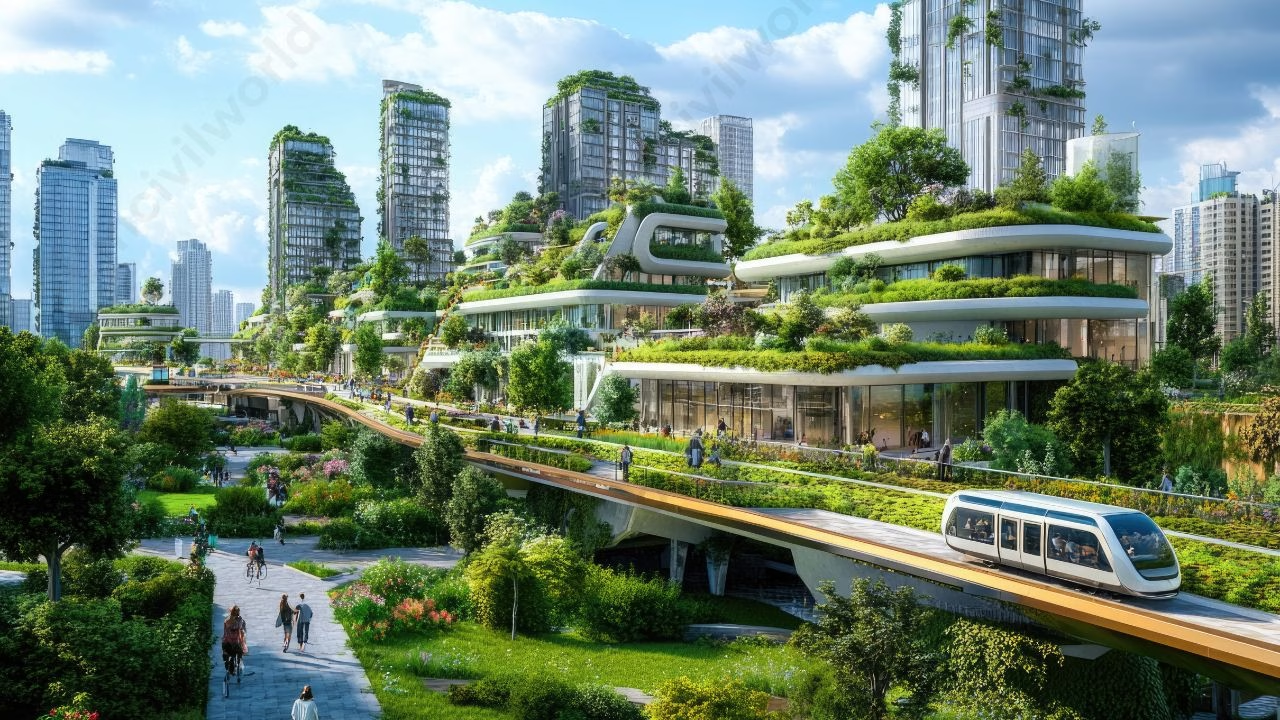
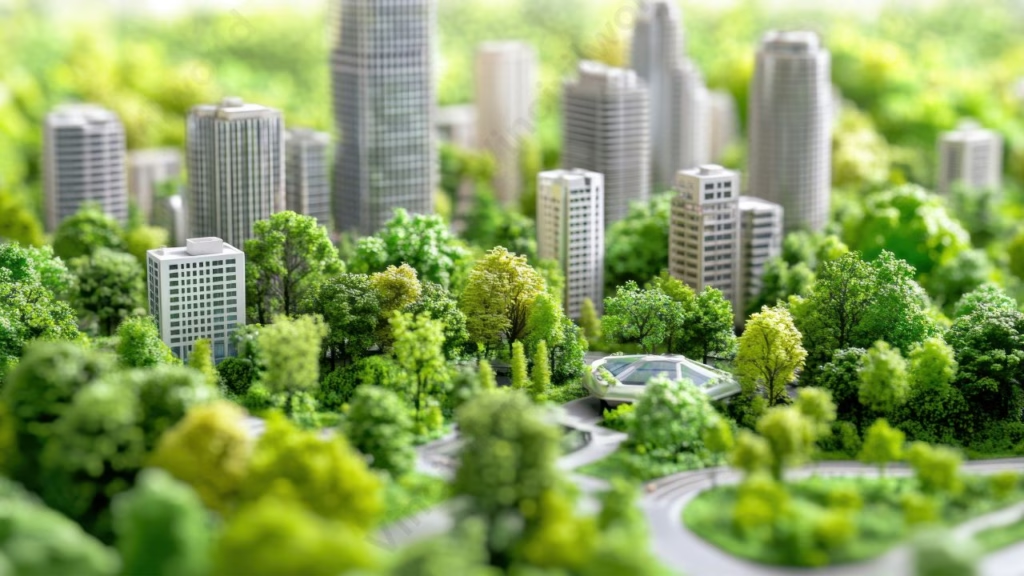
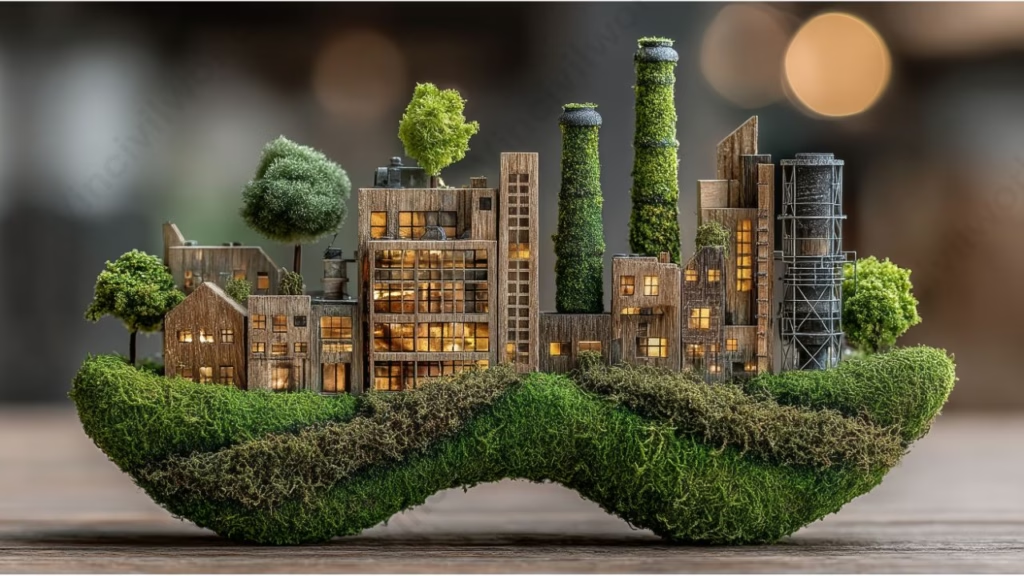
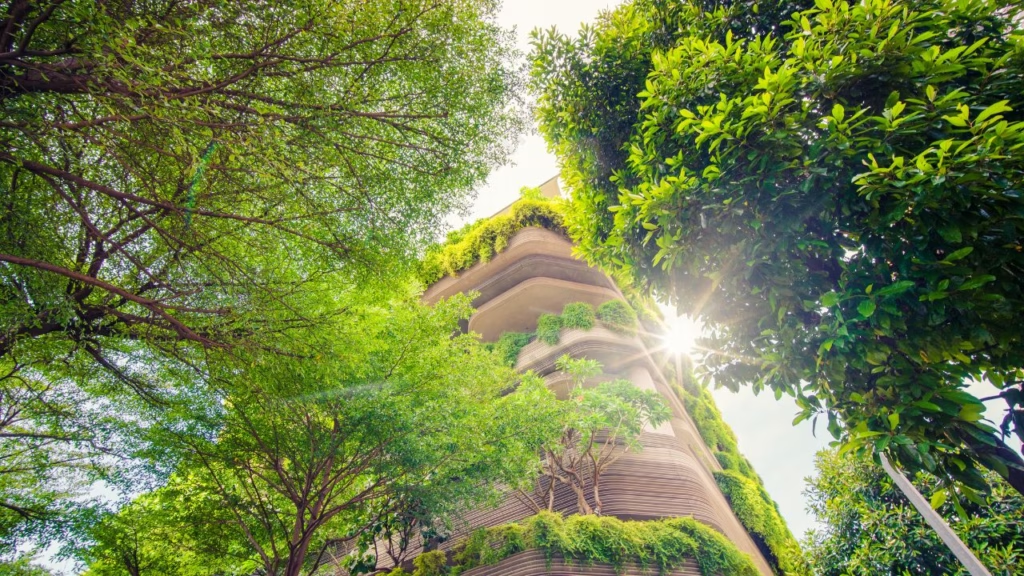
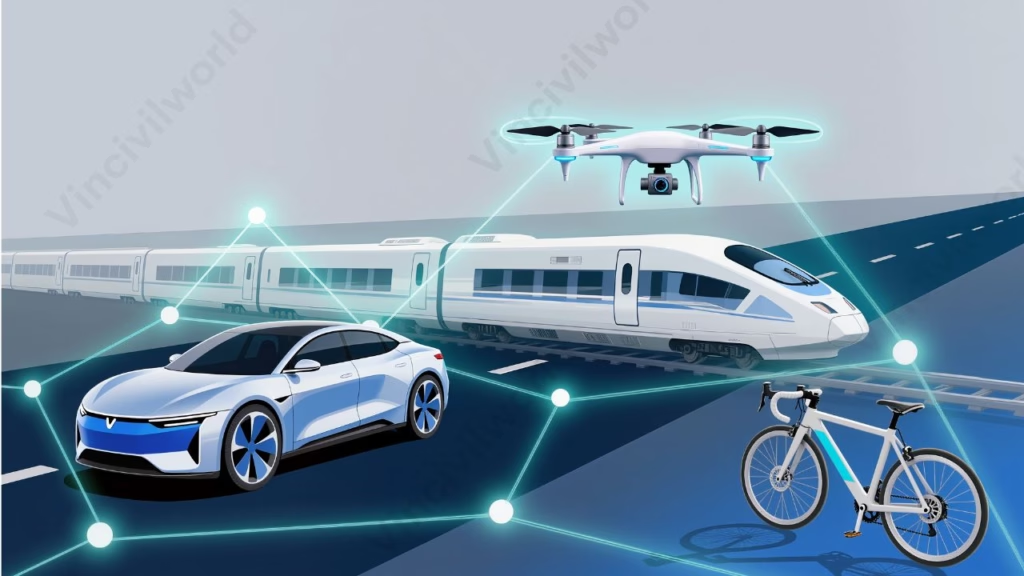
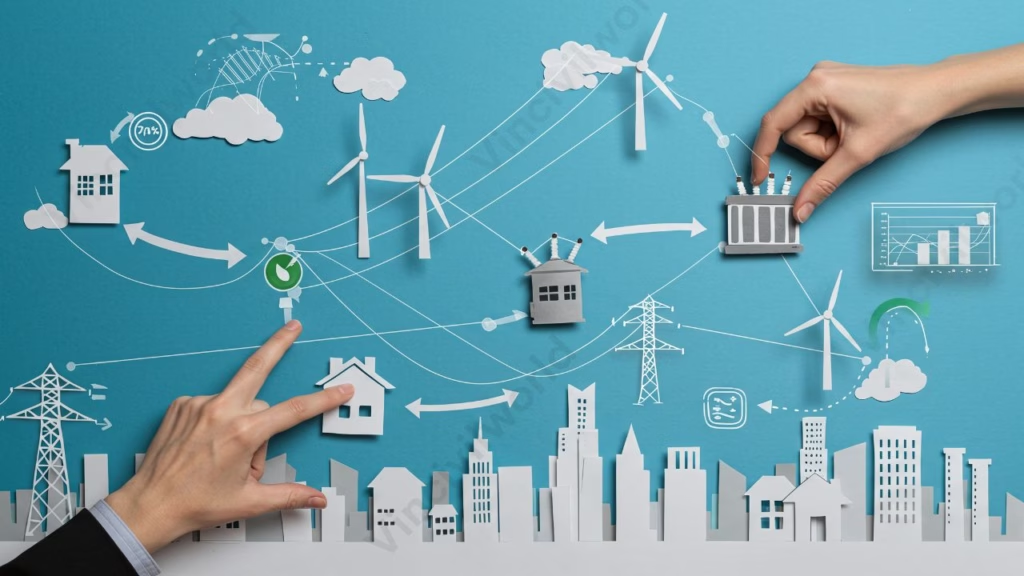
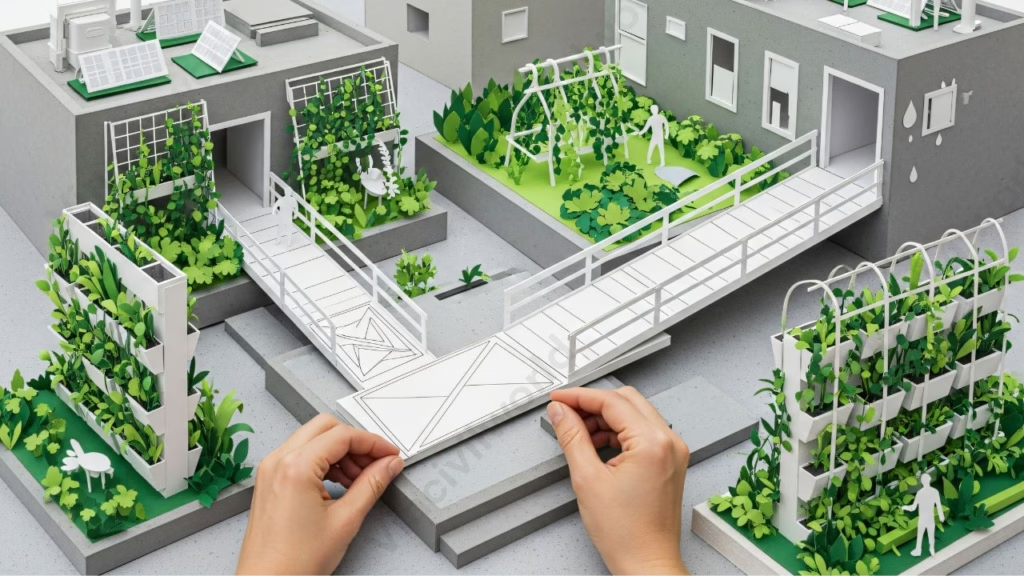

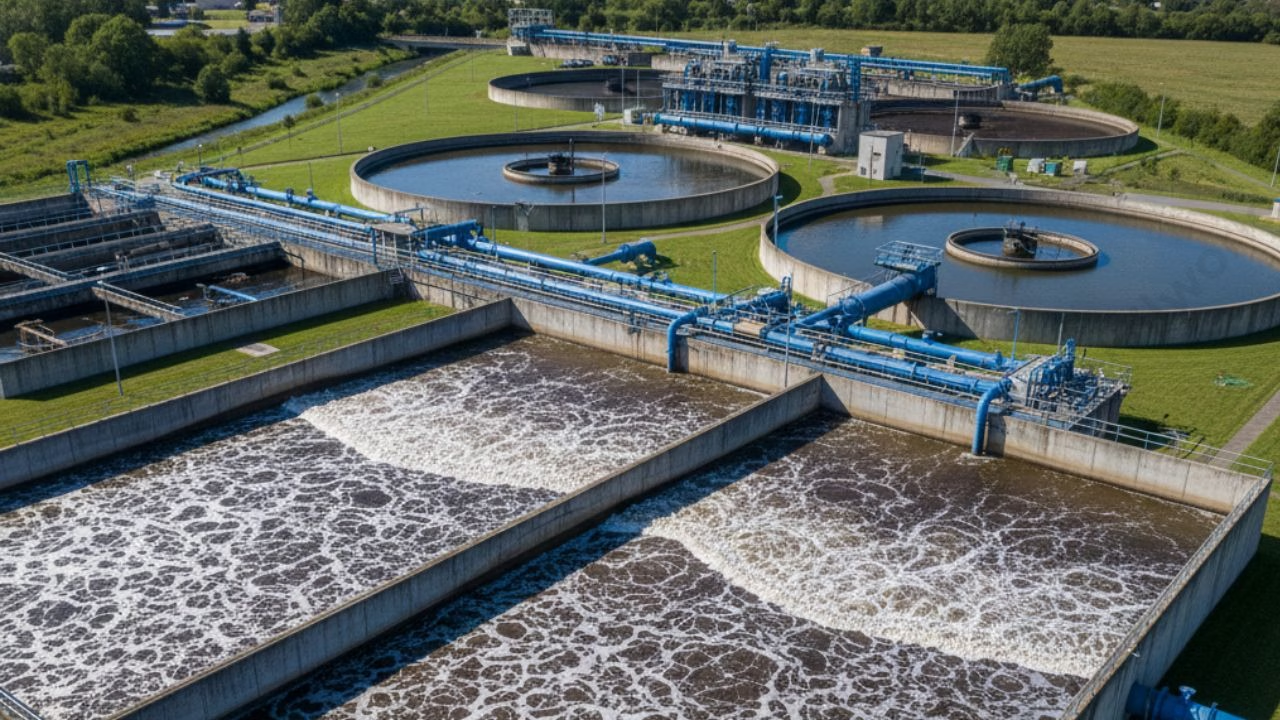
Reblogged this on Rashid's Blog: An Educational Portal.
Sustainable Cities is the places we live in by at least 2040. Thank you 😊